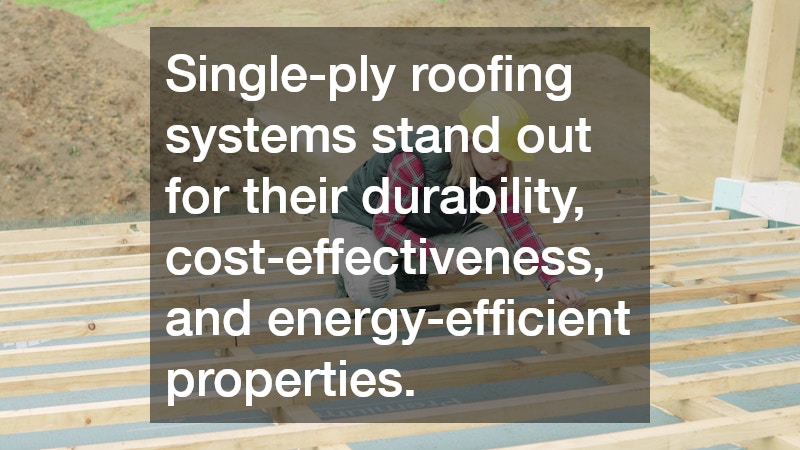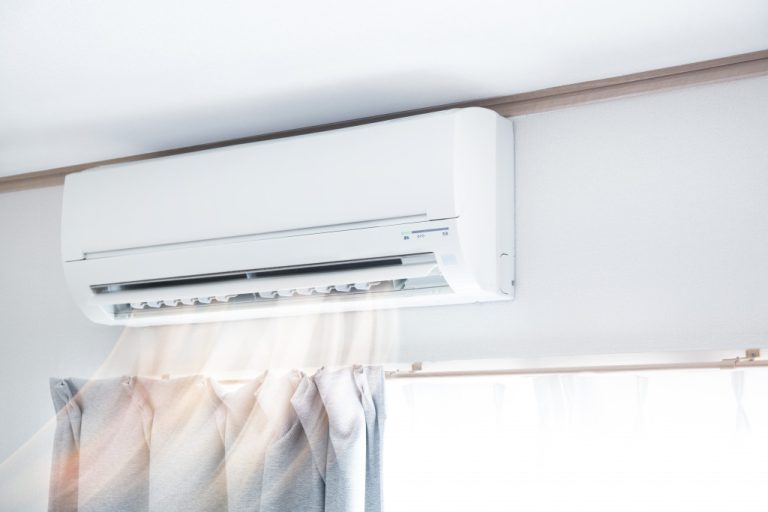Why Single-Ply Roofing Is the Smart Choice for a Commercial Roof
Explore the benefits and considerations of choosing single-ply roofing for commercial roof installation. This innovative roofing solution has gained popularity in the building industry for its durability, cost-effectiveness, and energy efficiency.
What Are the Benefits of Single-Ply Roofing?
Durability and Longevity
Single-ply roofing systems are known for their resilience against weather extremes, reducing the need for frequent repairs. These systems are engineered to withstand severe climatic conditions, offering a robust solution for commercial buildings.
The materials used in single-ply roofing, such as TPO and EPDM, are inherently resistant to UV rays, chemicals, and pollutants, enhancing their lifespan. As a result, building owners can enjoy long-term savings by minimizing the frequency of roofing replacements.
Furthermore, single-ply roofing systems are often backed by substantial warranties, providing additional peace of mind. The investment in these roofs pays off through reduced maintenance costs and extended service life.
Cost-Effectiveness and Installation
Single-ply roofing offers significant economic advantages, particularly in installation and labor costs. Its lightweight nature simplifies handling and minimizes the requirement for additional structural support, making the installation process quicker and more efficient.
The reduced installation time directly equates to lower labor expenses, enabling commercial property owners to allocate resources more effectively. Additionally, single-ply roofing systems typically entail lesser material wastage, further cutting down on overall project expenses.
Moreover, the installation can often be achieved without extensive disruption to daily operations within the building. This efficiency translates into an attractive choice for businesses seeking to optimize budgetary outlays while upgrading their facilities.
How Does Single-Ply Roofing Enhance Energy Efficiency?
Reflective Properties
Explore how the reflective surface of single-ply membranes contributes to reducing heat absorption and cooling costs. The reflective nature of materials like TPO helps deflect solar radiation, maintaining cooler building interiors.
This feature reduces the reliance on air conditioning, consequently lowering energy consumption and utility bills. Over time, this energy efficiency can lead to considerable savings for building owners.
By diminishing heat absorption, single-ply roofing contributes to a more sustainable and environmentally friendly commercial space. This makes it an ideal choice for companies committed to reducing their carbon footprint.
Insulation Compatibility
Discuss the adaptability of single-ply systems with various insulation types to optimize building energy performance. Single-ply roofing systems are compatible with diverse insulation materials, allowing for tailored solutions that enhance thermal efficiency.
The flexible nature of these systems enables them to accommodate dense insulation layers, effectively acting as a barrier against heat flow through the roof structure. This adaptability is crucial in achieving specific energy conservation goals for commercial buildings.
Proper insulation pairing not only bolsters energy efficiency but also improves overall comfort in commercial spaces. It ensures that buildings remain functional under varying climatic conditions, making single-ply roofing a versatile option for energy-conscious businesses.
What Are the Maintenance Requirements for Single-Ply Roofing?
Routine Inspections
Highlight the importance of scheduled inspections to ensure the longevity and performance of single-ply roofs. Regular inspections are vital in detecting potential issues before they escalate into costly repairs.
Through routine checks, property managers can identify early signs of wear and tear or damage caused by external elements. Such proactive measures extend the roof’s lifespan, ensuring its effectiveness and reliability over time.
Additionally, inspections offer opportunities to implement preventive maintenance strategies, such as cleaning and minor adjustments. This diligence helps maintain the roof’s condition, optimizing its protective capabilities against environmental stressors.
Repair and Upkeep
Provide insights into the typical repair needs and maintenance strategies for preserving the integrity of single-ply roofing systems. Single-ply materials are generally low-maintenance, requiring infrequent repairs under normal conditions.
However, when necessary, repairs are typically straightforward, as the membranes can be easily patched or sealed. Having a proactive maintenance plan in place reduces the likelihood of unexpected damage and associated expenses.
Routine cleaning and inspections further minimize repair needs, maintaining clean and intact roofing surfaces. Such practices support long-term durability, ensuring that single-ply systems remain a dependable roofing solution for commercial entities.
Conclusion
Summarize the advantages and practical considerations of selecting single-ply roofing for commercial buildings, emphasizing its role as a viable and smart solution for modern construction challenges. Single-ply roofing systems stand out for their durability, cost-effectiveness, and energy-efficient properties.
These systems not only provide robust protection against environmental elements but also contribute to reduced operational costs through energy savings and minimal maintenance. As commercial buildings continue to prioritize sustainability and cost-efficiency, single-ply roofing emerges as a pragmatic choice.
Overall, investing in single-ply roofing aligns with the objectives of modern construction by promoting longevity, financial savings, and ecological responsibility. As numerous industries recalibrate their building strategies, this roofing solution offers a sustainable pathway to achieving comprehensive facility goals.




